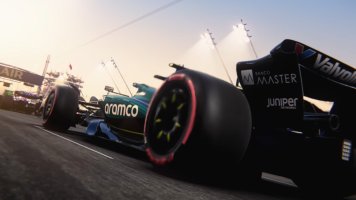NVidia words on Fast Sync
"In general, Fast Sync is designed to benefit games that are running with very fast native render rates (3 times or more the rate of the refresh on you monitor) "
Anything below that and you will see some stuttering.
Amazing how conflicting recommendations are on Vsync usage, including some exotic approaches with frame limiter, etc.
My experience, including playing lots of first/third person shooters:
1) Most important is to limit render queue length, Low Latency setting to On (equivalent max prerendered fames = 1 in older drivers). This is where the most lag comes from.
2) Conventional fixed refresh rate monitor - disable VSync in game, set to Adaptive in NVidia driver
3) Free/GSync monitor - enable monitor refresh rate sync, but still limit upper fps limit via VSync (set to On, in game or driver, doesn't matter)
We're on the same page with fast sync. The funny thing is that with my old monitor, I couldn't see tearing above 150 fps anyway. The tearing steps became too little.
I played quite a bit cs:go and always limited the fps to 200 and it was fine. In fact I was better without vsync than I was with fast sync. Maybe because getting the latest/current frame shown, even with a tear somewhere got me an advantage as I saw things in the corners of my eyes earlier?
Whatever..
About vsync: your 3 points are basically what I used before my in-depth research over some holidays.
Not wrong, but not the best I'd say.
Adaptive sync is great but you can't do the input lag trick with limiting 0.xx fps below the refresh rate.
This trick basically keeps the buffer empty until there's a stutter.
I didn't fully understand this but it's basically:
60 60 60 60 60 60 60 60 60 60 30 60 60
But only once a second or so. It's a consistent and very very little hiccup when the buffer is empty and needs the monitor to display the current frame twice.
But the input lag is massively reduced!
Using adaptive sync with this deactivates vsync as it never kicks in.
The problem with all my approaches to this topic though:
You need perfectly stable fps. So I need to reduce settings until the limit and the minimum fps are the same.
Gsync is great as I don't drop to 30 fps when the fps drop from 60 to let's say 55.
Giving me some higher settings for most of the time and some 50-59 fps moments at race starts for example.
I have to say I still feel stuttering with gsync, when the fps are fluctuating too much. Which makes sense as gsync only kills tearing but the difference in smoothness/frame pacing is still there.
So I always use a limiter, even with gsync, to have stable fps.
Frame queue: from my own testing I couldn't produce any input lag with gsync, no matter if 1 or 8 prerendered frames.
Which makes kinda sense: you simply get the current frame displayed, the vsync buffer isn't used since the monitor can wait for the gpu if needed.
If you use gsync + vsync and then hit the upper limit with 8 prerendered frames it's like hitting butter though

Most of my info comes from 3 years of having too much time to test everything myself between jobs and these 2 sites:.
I remember an old thread over at nogripracing where people discussed how to achieve smooth gameplay with minimal input lag in rFactor and what gave the best results was Vsync ON and cap the framerate to your monitors frequency -1. But this would give you a skipped frame once every second so it...

www.racedepartment.com
Many G-SYNC input lag tests & graphs -- on a 240Hz eSports monitor -- via 2 months of testing via high speed video!

www.blurbusters.com












